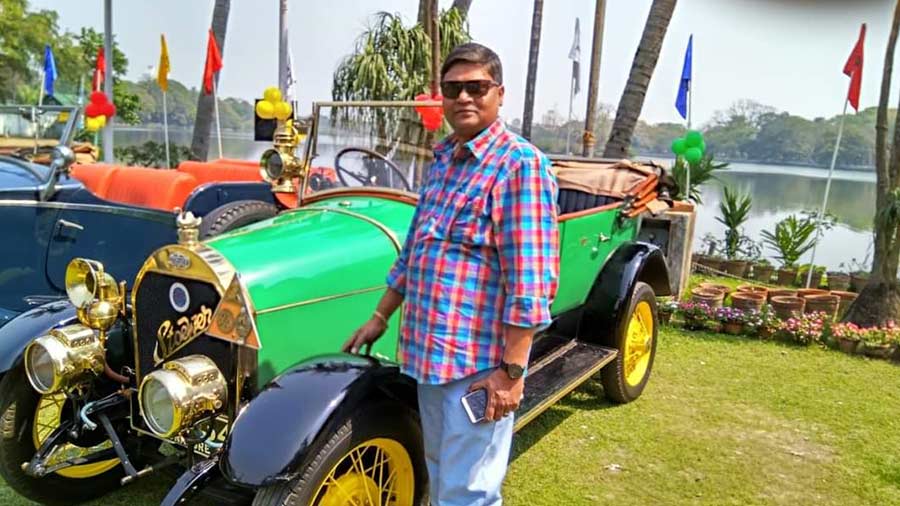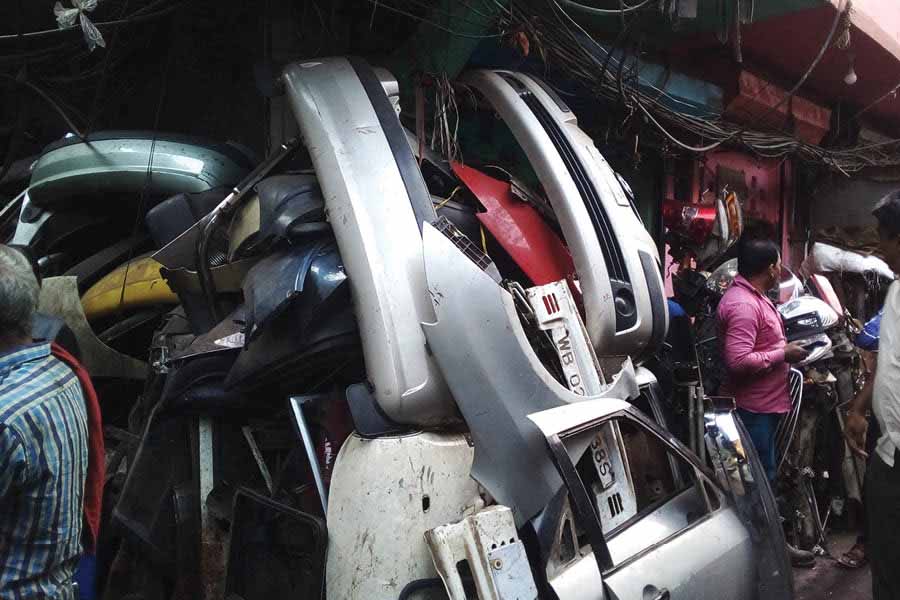There is a growing need for a second word to be attached to the description of old cars, extending their recall beyond ‘vintage’ to ‘heritage’. With good reason — these automobiles, a number of them restored to their original condition, are sending out a message that ‘old is better’ in a more democratic way than a restored building sitting deep inside a neighbourhood. Buildings and facades are immobile; heritage automobiles are not. Buildings and facades are not eye level; heritage automobiles are. Buildings and facades comprise relatively smaller sourced heritage embellishments; heritage automobiles need to be painstakingly aggregated.
The result is that heritage automobiles are not just pretty somethings perched daintily; theirs is the gateway through which the subject of heritage restoration needs to be evangelised. Because it cuts through ages and economic backgrounds faster, leading people to the conclusion that the world would be poorer without its vintage. That evangelisation needs to be ministered through the stories of restoration; there are few things more romantic than a ‘before’ and ‘after’ of a 90-year-old vehicle. There are few touched, felt, and experienced transformations more vivid than rust brown graduating to stainless steel.
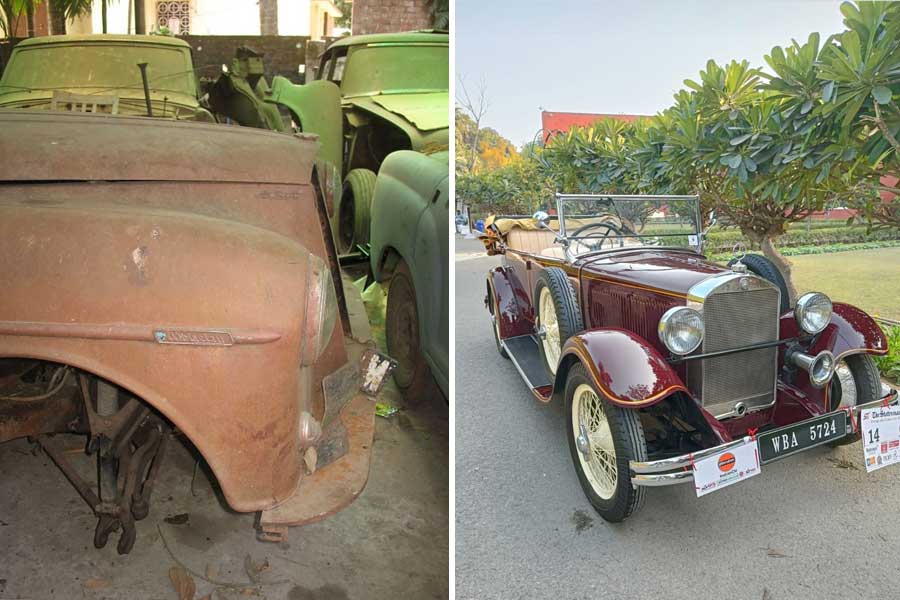
Few things are more romantic than a ‘before’ and ‘after’ of a 90-year-old vehicle, says Mudar Patherya
If this indeed be so, we have all been guilty of shorting automobile heritage transformation. The subject is not one of realities (nuts, bults, rivets, fenders and door handles); it is one of possibilities. This is a subject the world needs a correspondence course on — not on what was but what can be; not on what one can see but what one can imagine. An hour’s workflow explanation of a heritage automobile turnaround can do more to fire student perceptions than their sitting through theoretical lectures.
This background was necessary to explain the madness of restoration specialist Indrojit ‘Sparky’ Sircar. I took verbatim notes when he spoke.
The world of a restoration specialist
“I grew up in a household where the residence was adjacent to the workshop, so what we discussed at the dining table was the purr of the engine and the stability of the suspension. Where most people hear the chirping of birds in their homes, we heard the sound of metal on metal. There were a range of cars — not necessarily vintage — being given a makeover all the time. The complaints of the dining table were not whether the chicken had been under-cooked or the bhetki over-mustardised. The worry was that some engine was not ‘behaving’ properly. The result is that we became a deal flow channel – anyone who wished to sell a heritage car usually did so to us in the conviction that ‘Gaadi ta bhaalo thaakbay’ (The car will be taken care of). That explains how we started to build an inventory of heritage cars, and here comes the irony: most people would have thought that we would have pounced any incoming car and transformed it to roadworthiness within weeks; on the contrary, a number of our heritage cars were inventoried and when one eventually did a stocktaking of nearly 18 cars and three bikes — which I did after my father passed away a couple of years ago — I realised that some of the rust metal had been in our collection for about 25 years.
One of the vehicles that awaited an immediate transformation was the Studebaker Golden Hawk 1956. It was one of its kind in India. And here I must use some technical jargon: it came with a V8 engine (eight cylinders in a V formation); it was a 275 BHP automobile, one of the first to come from the factory with power windows, power brakes and power steering — decades before this became the norm. This complement of features made it a vehicle just waiting to be restored, whatever it took. It was not just another rust heap; it was history sitting inside the workshop.”
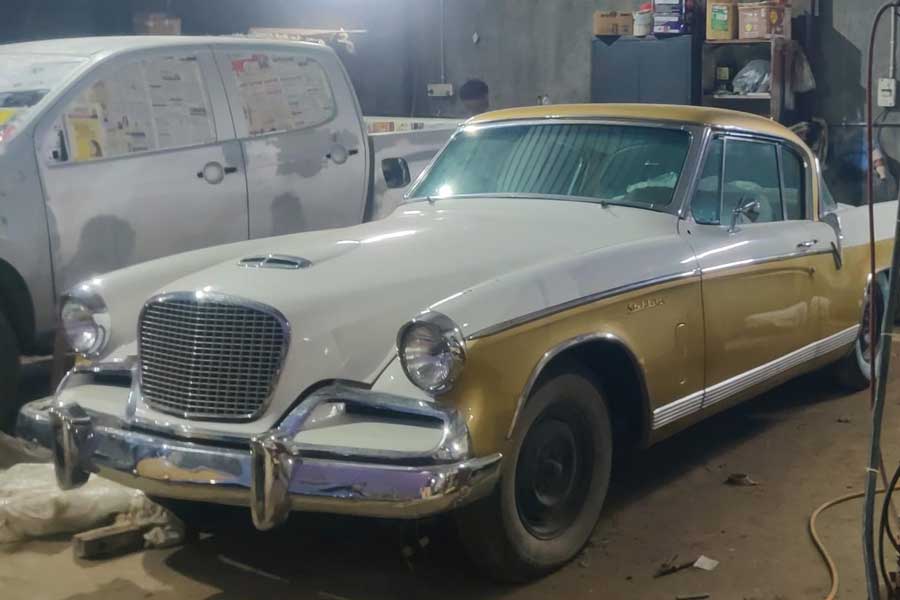
A Studebaker Golden Hawk 1956 — one of its kind in India
The journey of restoring an exceptional vehicle
“I had grown up seeing this vehicle; the original owner of the vehicle had been the Maharana of Nepal, after which it was acquired by the proprietor of Mahindra Jute Mills and thereafter by KN Roy, whose family member would come home to learn art, in this very car. So, the scrap sitting inside the garage came with childhood memories — the physical extended to the emotional.
The metal had fatigued. In some parts, the metal had extended beyond the original specification, as a result of which enlarged doors could not close, or bonnets would not shut completely. The entire car had to be measured, and a drawing indicated the length of each part as it was supposed to be, which became the basis for a streamlined bodyline.
The second challenge was related to the sourcing of original engine components. The company had gone out of business in the 1970s, so one needed to turn to a global eco-system of specialised component vendors. Since the original components were not available, one needed to place orders for components manufactured by networking for this Studebaker model through its dedicated Owners’ Forum. I reached out to a community of owners, restorers and component providers. One proceeded one sub-system at a time until one had aggregated around 200 items through a network of 15 global vendors — how cost-effectively one bought and how originally one bought.
The third challenge was the most critical. Most challenges were largely addressed through the users’ manual but the last frontier was psychological. The big questions: ‘How badly do I want this heap turned around? How fast do I want it restored?’ There came a point when the usual metrics of Return on Capital Employed and Return on Time Employed had to be discarded. The restoration did not only entail a larger outlay than one had anticipated but also across a longer time as the focus began to shift from functional economics to junoon.

The Studebaker Golden Hawk 1956 as it was acquired by Indrojit Sircar’s father
The fourth challenge was of cash flows: How much does one funnel from one’s running business to allocate to this restoration? Reinvestment in the running business would have a visibly measurable outcome; there was no saying whether every rupee reinvested in the restoration would ever be monetised (through sale or rent). So, one had to see this transformation as an investment exercise with no evident return. As they say, the cause becomes more important than the means. The biggest challenge was when does one say ‘enough’? There was a perpetual cost-benefit analysis. Should one seek to source an original component as opposed to a newly manufactured one?
There were a number of learnings. The turnaround became so international in its character that there were a range of global vendors directly and indirectly committed to turning the showpiece around. My interests became their interests; their processes became my processes. The peak emotional moment was when we rolled the vehicle out for its maiden test drive following restoration. Sure, the various components had been independently tested but there was always a grey area on how these components would engage with each other. The successful first drive represented the coming together of all that we had worked on for a little over two years, across hundreds of internet hours and in exchange for 2x value.
Turning around a ‘Police Chase Model’
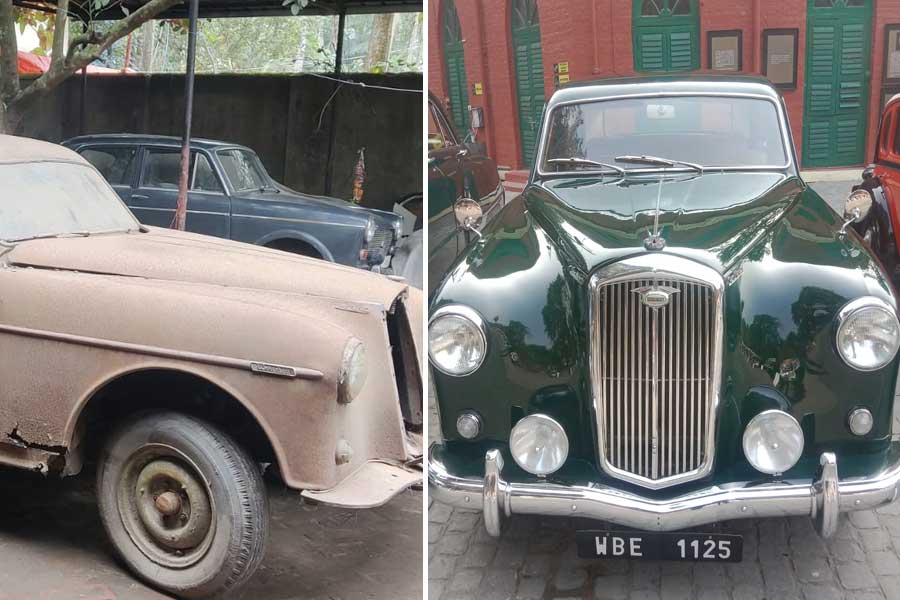
The transformation of an inherited Wolseley 6/90
“The other restoration I was engaged on was the inherited Wolseley 6/90. This was a specimen — among only four existing in the world and the one of its kind in India, usually referred to as the ‘Police Chase Model’. This 3000-cc vehicle comprised a twin carburetor. The most challenging part was sourcing the original metal bumper. I could have it locally fabricated, but it would not have been the same and I would have known. I located someone in Australia who possessed one and took time to part with it. I stayed on his map by calling every ten days (‘Sir, any luck for me?’) without irritating him. And then there is the rare 1930 Mercedes Benz (260 Stuttgart), the jewel of our crown. This used to be owned by the Laha family of Bidhan Sarani and was acquired thereafter by my grandfather. When I take this out for a drive, people turn around and look.
Unlike the built heritage movement in our country, the heritage automobile segment attracts a smaller audience. The growth of this heritage segment has been affected by the fact that it continues to be niche, the stories related to this heritage form have not been articulated, visibility for this space peaks in the winter and peters out thereafter. There has been a decline in the availability of specialised craftsmen and the population of surviving cars is small. The segment could get bigger visibility if it were positioned as an alternative asset class, and there is no active deal flow as owners are not interested to sell, so the only way the ‘market’ can grow is through restoration.
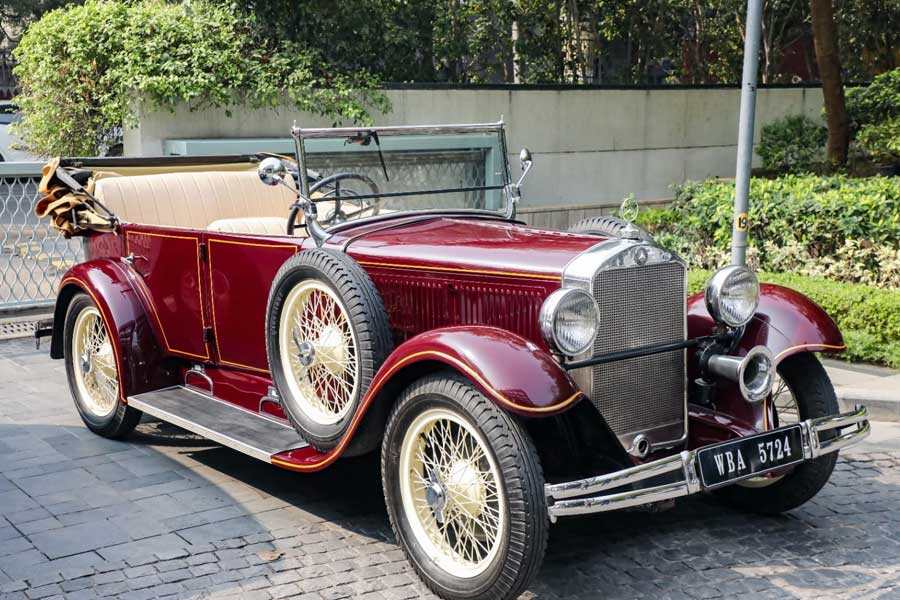
A restored Mercedes Benz 260 Stuttgart
I could have disinvested some of my cars to keep the cash flow moving. I could have rented them for additional income. If there is any reason that has held me back, it is that these automobiles are one of their kind. I have a quiet confidence that the more India becomes affluent there will be a spike in the rarity value of anything more than 75 years old. But that is still the monetary side of the argument — renting for a shaadi means exposing it to a user audience that may not possess the necessary respect in care and treatment. The other part of the argument is linked to self-esteem. The Studebaker, Mercedes or Wolseley are not just transformed metal, they are a manifestation of who I am, what values I stand for and what I think is important to save in this world. How can one transact that for money?”



